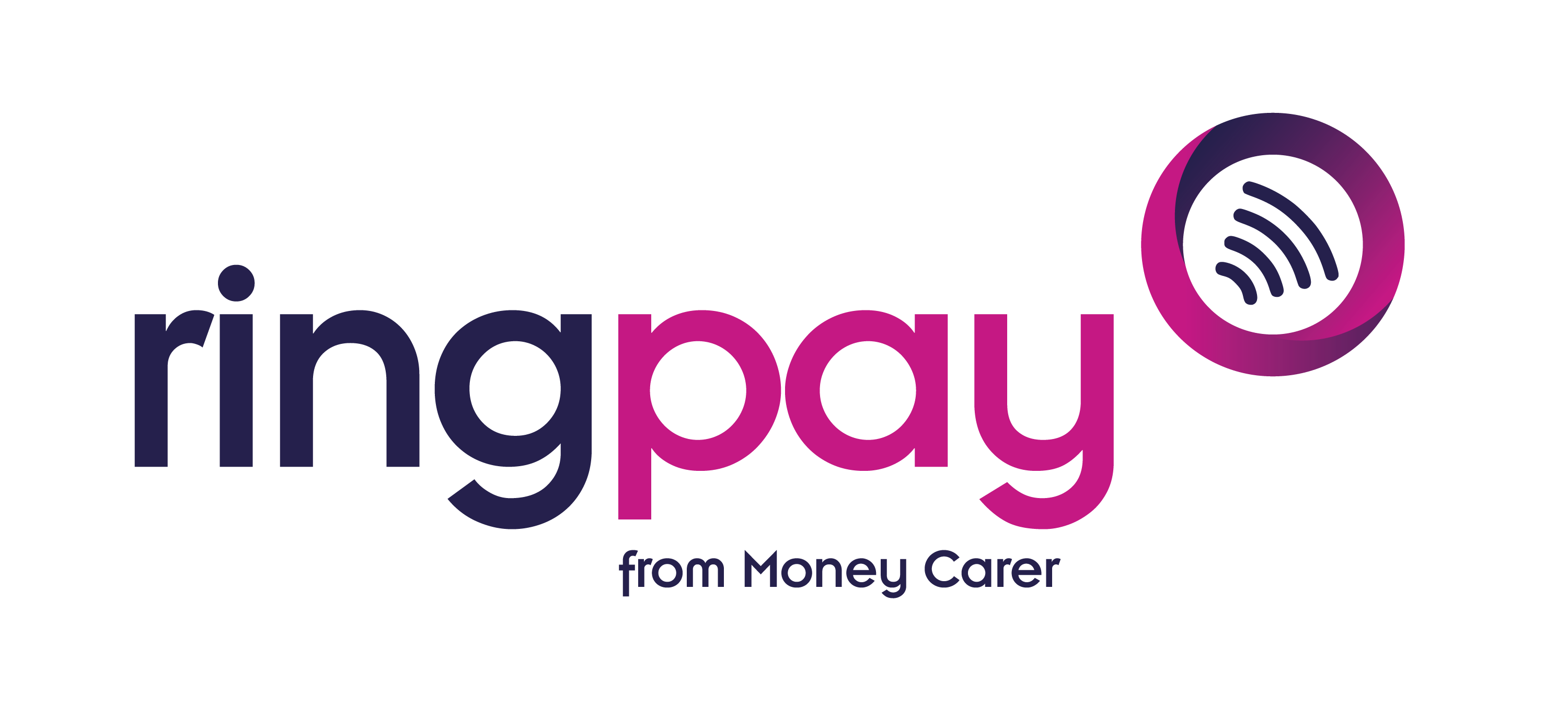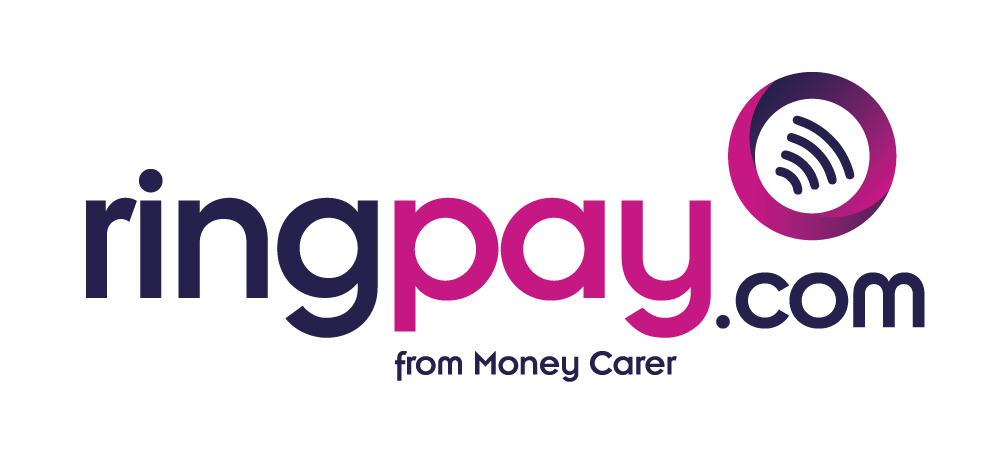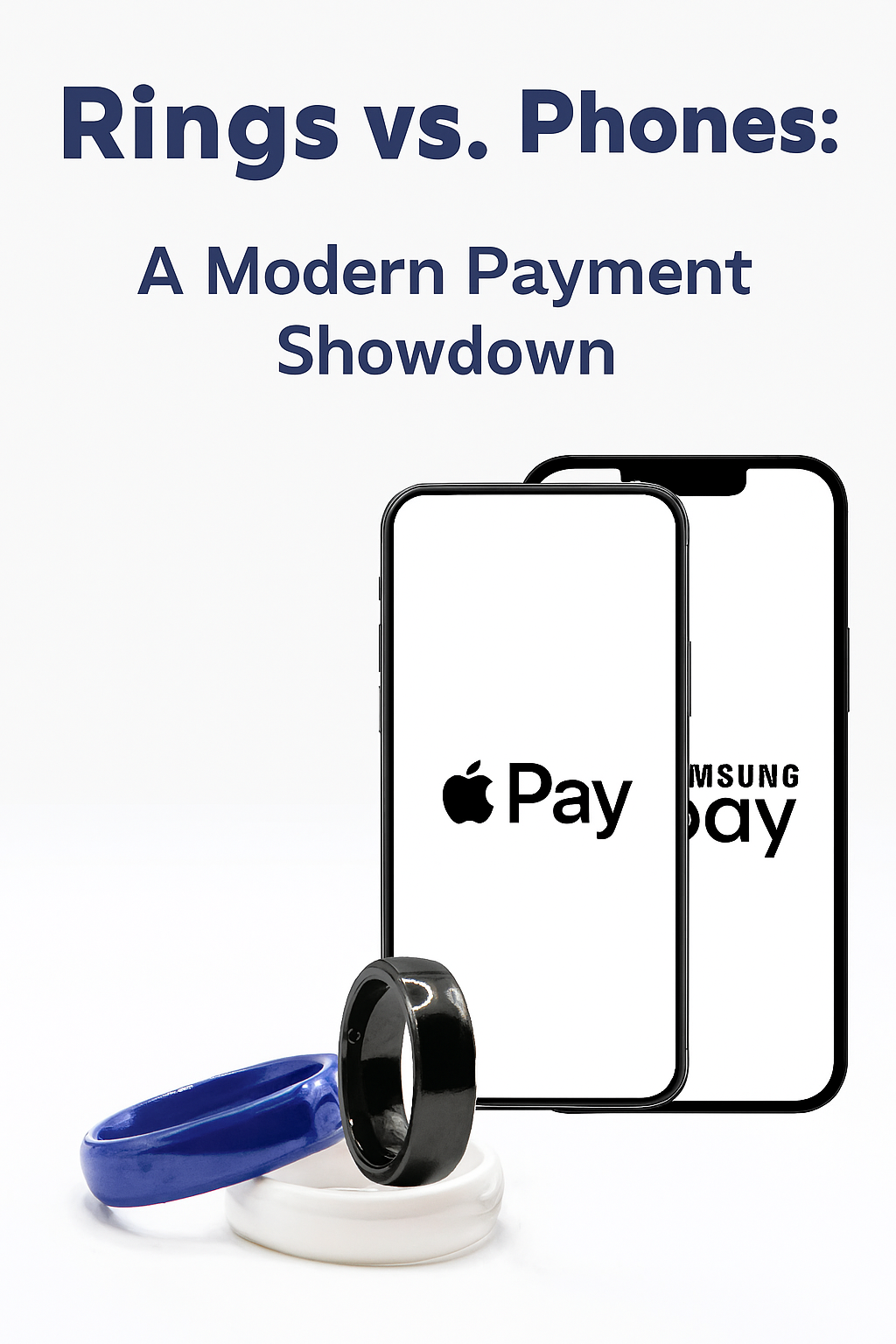In our increasingly cashless society, contactless payments have become a staple of everyday life. While mobile wallets like Apple Pay and Samsung Pay are widely adopted, a new contender has emerged: NFC-enabled payment rings. Each of these options offers unique advantages, catering to different lifestyles and preferences. Let’s explore how they compare and where each one shines.
NFC Payment Rings: Discreet, Hands-Free Convenience
What are they?
NFC payment rings are wearable devices embedded with a tiny Near Field Communication chip that allows you to make contactless payments, just like tapping a card or phone. You simply wear the ring on your finger, and when making a purchase, hold your hand near the terminal to complete the transaction.
Key Benefits:
-
Simplicity and speed: There’s no need to fumble with a wallet or even pull a phone from your pocket. One quick hand movement is all it takes.
-
Always accessible: Since you wear it all day, the ring is always ready to go — ideal for activities like jogging, gym sessions, or traveling light.
-
Durability and battery-free: Most payment rings don’t require charging, unlike smartwatches and phones. They’re waterproof and robust, making them reliable even in rough conditions.
-
Discreetness: Rings are subtle and stylish, allowing you to make payments almost invisibly, which can be a plus for those who value minimalism.
Considerations:
While they’re incredibly convenient, payment rings are often limited to basic functions (payments only) and may not integrate with loyalty programs or other wallet features as deeply as phone-based systems.
Apple Pay: The Seamless Apple Ecosystem
What is it?
Apple Pay turns your iPhone or Apple Watch into a digital wallet, allowing you to make secure payments anywhere contactless is accepted. It also works for online purchases and in-app transactions.
Key Benefits:
-
Security and privacy: Apple Pay uses device-specific numbers and unique transaction codes, so your card details are never shared with merchants.
-
Ecosystem integration: For those immersed in Apple’s ecosystem, Apple Pay seamlessly connects with other Apple services, apps, and devices.
-
Extra features: Beyond payments, you can store boarding passes, tickets, loyalty cards, and more in your Apple Wallet.
-
Widespread acceptance: Apple Pay is accepted at most major retailers worldwide, both in-store and online.
Considerations:
You need an Apple device, and battery life is a potential concern. If your phone or watch runs out of power, you lose access to payments.
Samsung Pay: Versatility and Wide Compatibility
What is it?
Samsung Pay is Samsung’s digital wallet service, designed for Galaxy phones and smartwatches. It supports NFC and, uniquely, Magnetic Secure Transmission (MST), enabling it to work with more payment terminals than most competitors.
Key Benefits:
-
Broader terminal support: Thanks to MST technology, Samsung Pay can work with older magnetic stripe terminals as well as NFC ones, making it extremely versatile.
-
Strong security: Like Apple Pay, it uses tokenization and biometric authentication (fingerprint, iris, or face recognition) to secure transactions.
-
Rewards and promotions: Samsung often provides cashback offers, discounts, and loyalty points for using Samsung Pay.
-
Cross-device flexibility: You can use it on Samsung smartphones and smartwatches, giving you different options for how you carry and use it.
Considerations:
It’s only available on Samsung devices, and some newer models are moving away from MST support, making it slightly less unique than before.
Which One Should You Choose?
Go for a payment ring if you value:
-
Extreme convenience and hands-free simplicity.
-
A minimalist lifestyle with less reliance on gadgets.
-
Reliable payments even during activities like swimming, running, or working out.
Choose Apple Pay if you:
-
Are deeply integrated into the Apple ecosystem.
-
Want additional wallet features beyond payments (tickets, passes, etc.).
-
Prioritize privacy and seamless security.
Opt for Samsung Pay if you:
-
Use Samsung devices and want the broadest terminal compatibility.
-
Appreciate rewards and special offers tied to your payment method.
-
Want flexibility between phone and watch payments.
Final Thoughts
As technology continues to evolve, the way we pay becomes more personal and flexible. NFC payment rings represent the cutting edge of wearable convenience, while Apple Pay and Samsung Pay offer powerful, feature-rich mobile wallet ecosystems. Ultimately, the best choice depends on your device preferences, lifestyle, and how much value you place on simplicity versus features.
💡 Have you tried a payment ring yet, or are you loyal to your phone wallet? Let us know your experiences and which method you prefer!



Részesedés:
Top 10 Questions to Ask Before Choosing a Payment Ring
Why Payment Rings Are the Future of Contactless Payments